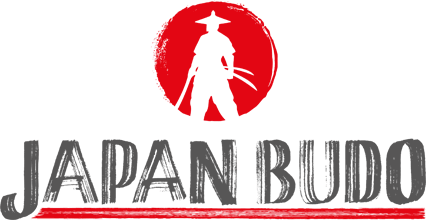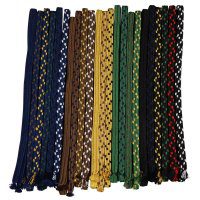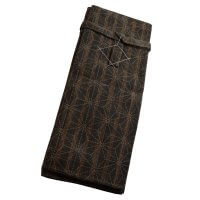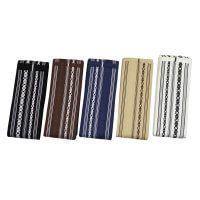We are regularly contacted by customers who are looking for a genuine, antique Samurai sword as an investment search.
That is an understandable approach. However, most people realise after a short time that a sword is much more than just a financial investment.
For professional reasons alone, it is important to us not to reduce these treasures of Japanese history to a mere investment. Nevertheless, we would like to discuss the topic of Nihonto as an investment in more detail in this article so that interested parties know what to expect.
The names samurai sword, nihonto and katana are used in the article as different names for Japanese swords.
Antique and modern swords are categorised as tangible assets. This type of investment summarises different investment objects.
Why we think antique samurai swords are a better investment than gold
Gold is considered the standard for stable-value investments for people who have some money left over to save. However, this investment is relatively boring. Investing in jewellery usually makes little sense, as jewellery costs many times more than its pure gold value and is only valued according to its gold value when it is sold. It can therefore take years for the purchased piece of jewellery to reach the resale value that was originally paid for it.
Gold bars and gold coins are very popular. If you have looked at them once, you don't usually need to look at them a second time, because the appearance is not that impressive.
Antique swords are also considered to be of stable value and have properties that offer much more in everyday use. As the owner of an antique sword from Japan, you can admire, inspect and display your investment at home. In the long term, you will enjoy a sword much more than a gold bar!
Properties of property, plant and equipment and examples
Property, plant and equipment is actually a term used in business administration and refers to tangible assets held as business assets. In the private sector, the term or the name tangible investment is used to describe financial investments made in items that can maintain or even increase in value. These investments are the material counterpart to capital investments.
Items that are valuable enough to invest relevant amounts are used as tangible assets for the purpose of value investment. As money is exchanged for the item and in the event of a subsequent sale, the item is exchanged for money again, tangible investments are considered inflation-proof. This is because inflation is a devaluation of money and objects are not directly affected by this devaluation.
Typical tangible assets as investments are
Real estate
Property (houses and flats) is almost an asset class of its own, but in the subdivision of investments into capital investments and tangible assets, it is definitely categorised as a tangible asset.
Property is a popular investment and store of value. Many people invest their money in their own home, for example, so that they can benefit from this lifelong investment in old age. Either by living in it themselves or to be more financially independent.
Gold
Gold is another classic investment. Gold has been admired for centuries and the world's reserves are limited. Fans of this investment therefore assume that its value will increase forever. In the long term, this has always been true throughout history.
Although gold has few practical applications outside of its use as jewellery, its value has continued to rise and even today gold is highly valued as a stable investment.
Coins
Collector coins have gone somewhat out of fashion, but they are also a tangible investment. Many coins are gold or silver coins, which have a material value in themselves and therefore represent a solid investment opportunity.
In addition, many specimens have a collector's value, although this can fluctuate. Due to the material value, however, there is always a solid basic value and there is no risk of total loss, as can happen with shares, for example.
Cars
Cars are also one of the classic ways for wealthy people to invest money. However, they come with a few challenges.
Cars need space
Above all, space is needed for a car collection. The larger the collection, the more space. In addition, the parking spaces must of course be dry and secure. This can entail considerable follow-up costs. In some cases, the increase in the value of cars can exceed these running costs. The bottom line, however, is that it is a complicated overall situation.
Care
Cars require a certain amount of care. The better the "storage" is organised, the easier the maintenance will be. Basically, however, it is necessary to invest time regularly.
Future-proof in the long term?
Rare cars in particular are considered a safe investment. However, there are currently efforts worldwide to replace cars with petrol engines with electric cars or cars with other more modern drive systems in the long term.
It is difficult to predict how this development will play out and whether collector's examples with petrol engines will still enjoy the reputation they have today in 50 to 100 years' time.
Painting
Paintings or art in general are more of an exotic investment, but have been quite popular in recent years. However, many people have found it to be a difficult asset class, as it is difficult for laypeople to understand which works of art are really something special.
In addition, the real increases in value are mainly taking place in the case of the great and well-known masters such as Pablo Picasso. These are already so expensive today that even many wealthy customers can/will hardly afford these paintings.
Nihonto - an undervalued investment?
One thing in advance: if you are looking for astronomical increases in value, you are better off with Bitcoin and other cryptocurrencies. Those who want a solid Investment with moderate growth potential can definitely consider buying a genuine Japanese sword.
We would like to emphasise that swords also offer exceptional potential for enthusiasm. The topic also offers a number of advantages from an investment perspective:
Solid investment
Swords from Japan have always been valuable objects. They have a long tradition in Japan itself as collector's items for the wealthy upper classes. However, Japan was cut off from the outside world for a long time. Since the opening up of the country in the 19th century at the latest, swords have also enjoyed a high international reputation and are a popular investment.
Compact groupage goods
Swords are comparatively compact. A katana blade, for example, usually only has a blade length of around 70cm and takes up little space. Mounted in a simple wooden mount (shirasaya), even larger collections can be stored in a relatively small space. This is a great advantage over other valuables.
Presentation in a display case is also a popular solution that takes up no more space than a small aquarium, for example.
Limited occurrence
The total number of swords from a particular period is limited. No new ancient swords will be added, as the eras are already in the past. Similar to the gold deposits described above, the total number of ancient swords is limited.
Increase in value not unlikely
In the overall universe of the Japanese sword, there are some examples where a future increase in value at least does not seem unlikely. We will go into this point in more detail later in the text.
Indulgence
In addition to material details, swords also bring elements of pleasure for people who find access to them. The samurai have such a rich history that, in addition to the sword as an investment, added value can also be brought to other areas of life.
History and tradition
Swords are an integral part of the history and tradition of the samurai. Samurai swords can be an introduction to this interesting field of knowledge.
Life of the samurai
Another interesting topic is the life and attitude to life of the samurai. Raised to fight from an early age, members of the upper class in Japan. Life with certain values and indifference towards death, which seemed to be constantly close at hand.
These are all stark contrasts to today's life and society. But dealing with them can certainly broaden your personal horizons.
Observation
You can spend hours on the sword itself until you have seen every detail. Due to the different perception of the surface with different incidence of light, you usually discover a new detail of the blade almost every time that was not seen before.
Nihonto need care
One detail we would like to mention is that swords require regular maintenance to keep them in good condition. This is because the blades are made of steel and can rust.
If stored correctly, the maintenance effort is limited. However, anyone wishing to purchase a Nihonto as an investment should definitely bear this point in mind.
Samurai swords are art
What you need to know before investing in Japanese swords is that although sword forging is a manual process, at the level of Japanese swordsmiths it is an art and the market for samurai swords certainly has parallels with the art market.
Anyone hoping for an increase in value can orientate themselves on two rules of the art market, which are at least more promising than a chance purchase.
Well-known, respected masters usually remain respected
Apart from short-term trends and changing popularity, the great and already well-known masters have the greatest potential for increases in value.
You would find such swords in our shop in the category Ancient Nihonto find. However, as we only list a small selection of our range on our homepage, you are welcome to contact us if you are interested in purchasing such a valuable investment. Contact us to us.
Emerging talents
Swordsmiths in Japan earn their reputation in forging competitions in addition to their general performance. The greater a blacksmith's success, the higher the price of the blades.
Analogous to the art market, it is therefore possible to identify up-and-coming talents at an early stage and to acquire early works as an investment at comparatively favourable prices.
However, just as with art, this is a difficult endeavour, as the future has to be predicted, which is very difficult in many respects. You can find works by current blacksmiths in our category for Nihonto from the recent past.





